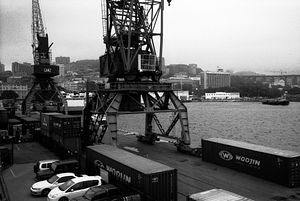Domestic hurdles, Western sanctions, and unprecedented growth on the global petrochemicals market are pushing Russia to look increasingly toward the Asia-Pacific. During the recent Eastern Economic Forum in Vladivostok, local companies poised to increase supplies to the region and signed a number of lucrative deals. While such expansion could play well to offset Russia’s crippled economy, it poses a question: whether Russian companies can be trusted in light of the Kremlin’s foreign strategy to combine business and politics.
The global petrochemicals market capacity is poised to grow to 1,931.5 million tonnes per annum (mtpa) in 2026 and appears as the fastest-growing segment of crude oil consumption. Asia will be in the vanguard of such growth, with China adding more than half the number of upcoming projects in the region and appearing as the top destination for petrochemical investment. Yet Russia’s exports to Asia still lag behind compared to Europe, undercutting the Kremlin’s self-declared turn to the east.
Despite Russia accounting for merely 1 percent of global petrochemical output, its industry is booming. With the local economy facing a heavy blow due to Western sanctions, an increase in petrochemical exports has emerged as the major reason for growth within the industry and a number of adjacent ones. Overall, Moscow plans to achieve capacity of 24.6 mtpa by 2026 and the Asia-Pacific’s share is projected to rise substantially in the overall export portfolio.
Multiple construction projects are already under way and energy giants are determined to invest heavily in petrochemicals. Gazprom plans to invest $5 billion in a petrochemical plant on the Baltic Sea; Russia’s major state-run oil company, Rosneft, is set to produce 3.4 million tonnes of petrochemicals in the troubled far eastern region. Russia’s largest petrochemical company, Sibur, with its complex, Zapsibneftekhim, is scheduled to achieve a total capacity of 1.5 mtpa of polyethylene.
During the latest Eastern Economic Forum, the Russian Direct Investment Fund and Japan’s Marubeni Corporation agreed to develop an industrial facility for methanol production. The $800 million plant will have an estimated capacity of over 1 million mtpa of methanol, and construction is set to begin in 2020. The moves are expected to further solidify Russia’s presence in a booming global methanol market that is projected to reach $54.16 billion by 2021. According to a 2017 report from IHS Markit, Northeast Asia accounts for 54 percent of global methanol capacity and is the world’s leading consumer.
Seyfeddin Roustamov, the main shareholder of PJSC Metafrax, one of Russia’s leading producers of methanol, said that his company is planning to invest more than 950 million euros ($1.1 billion) in construction of a chemical complex construction in Gubakha of Perm Region. The facility should be capable of producing up to 575,000 tons of carbamide, 308,000 tons of ammonia, and 40,000 tons of melamine per year. Earlier, Roustamov’s company established Samyang Chemical, a joint venture with Korean Sunghong Co., Ltd. to boost its outreach to the Asia-Pacific.
There are few surprises behind such moves. The strategy to increase petrochemical exports is dictated by difficulties that the Russia’s oil-dependent economy has faced in the recent years. With the worst yet to come and sanctions likely getting tougher, an increase of supply is meant to offset the volatile market of crude oil exports and declining demand, while also extracting additional value from the troubled oil industry. The latter has been delivering diminishing returns as global prices continue to weaken and remain volatile, thus posing a threat to Russia’s already weak economy and domestic political stability.
With Moscow increasingly eyeing the Asia-Pacific region, the question arises at to whether Russian companies can be reliable.
Such concerns are not baseless. In Europe, Russia has been increasingly involved in weaponizing its energy exports to further boost political influence and extrapolate geopolitical ambitions. Russia is also seeking to undermine EU solidarity on the sanctions regime by increasing its energy inroads in its former Central and Eastern European satellite states. These actions could make some customers in Asia wary, wondering if Moscow is up to the same tricks in the east.
Meanwhile, there is a place for healthy skepticism about Russia’s foreign policy adventurism.
Unlike in Europe, Moscow does not nurture far-reaching goals for exercising its power to divide and rule in Asia; its power is dwarfed by the shadows of China and Japan. Moscow cannot afford to compete in the Asia-Pacific, but it can manage to collaborate. Russia’s ambitions in the region are likewise not as aggravated by centuries of great power rivalry as in the West in the eyes of the Kremlin’s strategists.
With Western markets growing increasingly suspicious and, hence, hostile toward Russia and becoming harder to access, Moscow’s businesses are desperate for alternatives. If not Asia, it is unclear where else Russia could go to increase trade turnout, receive funding, and possibly access new technologies.
In effect, the growing sanctions pressure might create a precedent of Moscow acting primarily with healthy attitudes to extract economic benefits. For a rare occasion, the Kremlin’s exports might run independently from politics within the Asia-Pacific and that will spell good news for everyone.
Dmitriy Frolovskiy is a political analyst and independent journalist. Follow him on Facebook.

































